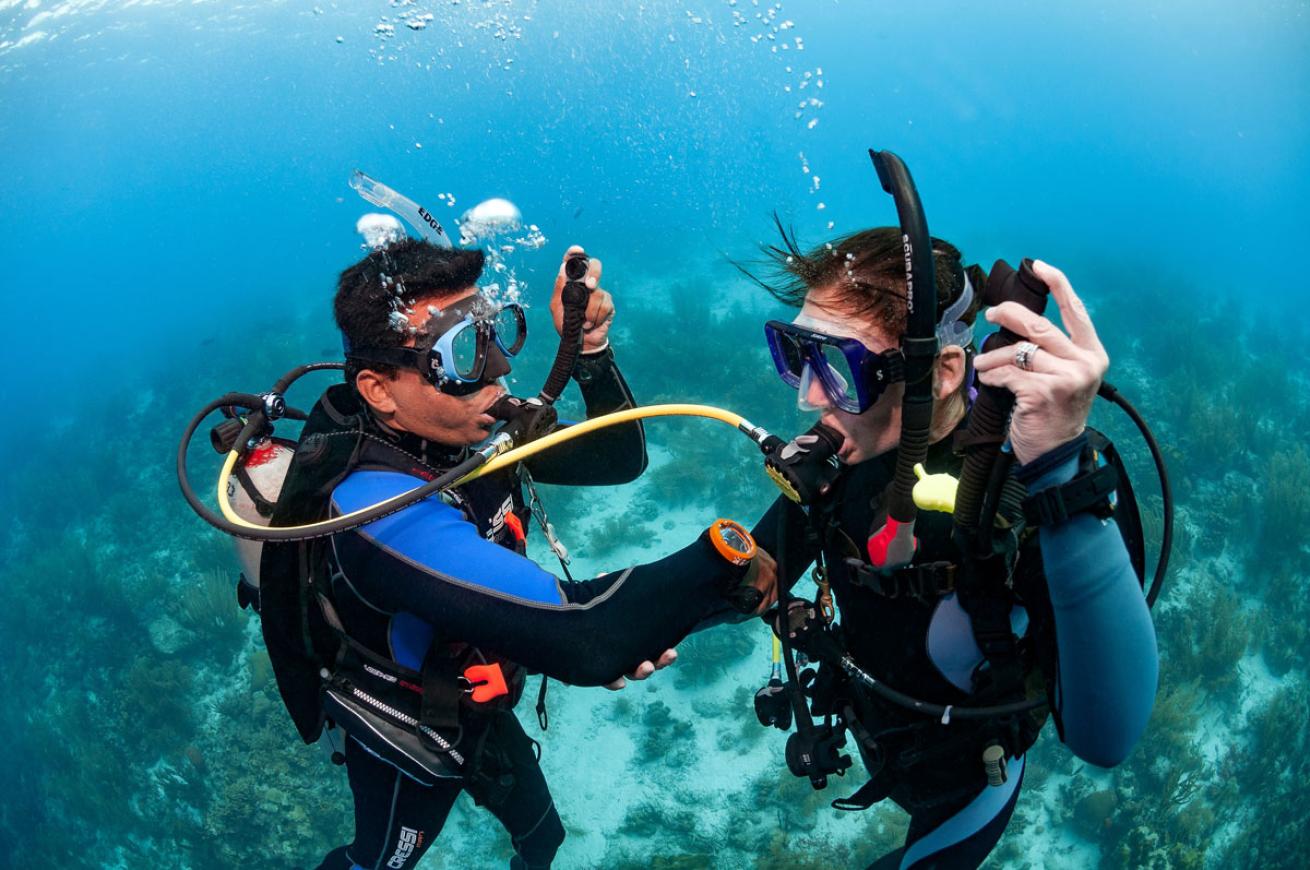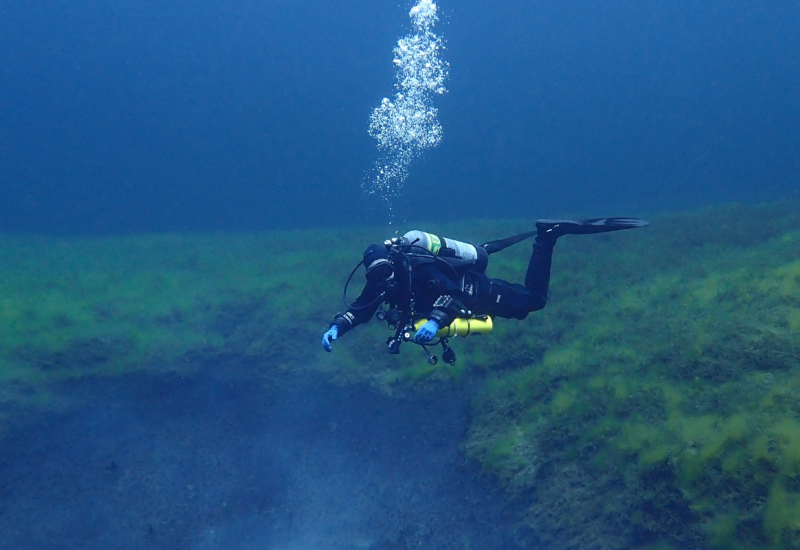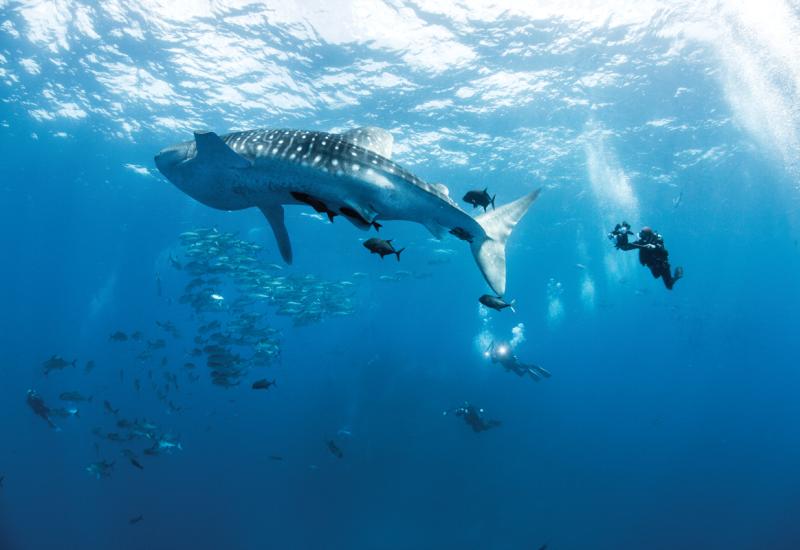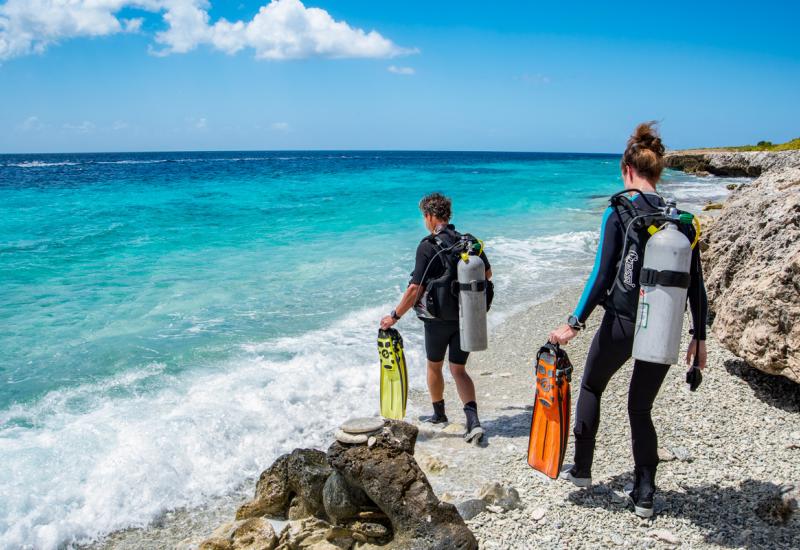What To Do When You Run Out Of Air While Scuba Diving

PADIDo you know what to do when you run out of air?
What should you do if you run out of air? This has always been one of the most frequently asked and significant questions for new and experienced divers. Even more so today. Not because the answers have changed, but rather because our understanding of the out-of-air situation and the way divers are equipped has evolved. As a result, the choice of which ascent you make and how you make it may be different today than it was years ago.
Are You Really Out of Air?
Probably not. What you sense as an out-of-air situation is usually a low-on-air situation. Indeed, in nearly all scuba accidents, the victim still has air and the regulator still functions. What usually happens is that a diver breathes his air supply down so low that the regulator can no longer provide air at the effort level required by the diver. In theory, this occurs when ambient (surrounding) pressure equals tank pressure. At 100 feet, this would be about 60 psi. Regulator studies and diver experience have shown that because of the mechanics and maintenance of regulators, diver breathing habits and rates, and the inaccuracies of submersible pressure gauges, the diver will feel out of air at a tank pressure higher than ambient pressure and that this disparity increases with depth. It's not as simple as that, though, because regulators reduce cylinder pressure in two stages, and because of breathing habits, exertion levels and so on. These are among the reasons why the current practice is to surface with 500 to 800 psi remaining rather than 300 psi.
Equipment or Human Failure?
Equipment can fail, but does so rarely. With a regulator, failure usually takes the form of an air leak, a water leak or a free flow. If there is a problem with the regulator, it usually still delivers air, creating an inconvenience rather than a serious situation. In spite of what textbooks and instructors might say, we do not learn to make emergency ascents because of the possibility of equipment failures, but because 99% of the time the errors are human errors. This significant fact does not change the ascent options available, but it may change which options the diver chooses and how that ascent is performed.
The Power Inflator
The use of power inflators and alternate or octopus regulators has become nearly universal. Both have a significant bearing on emergency ascent choices. A little-known fact about power inflators is that they will continue to function at a lower tank pressure than that at which a diver can comfortably continue to breathe from a regulator. At low tank pressures and greater depths, the flow rate is slower, but the power inflator still works even when the demand-valve regulator produces an out-of-air sensation for the diver. It's important to note that if you're at or nearly neutral, you don't need BCD air added anyway. As soon as you start up, buoyancy increases just like on any ascent. You may however need to orally inflate once at the surface to get enough buoyancy.
Don’t Forget To Inhale
Another misunderstood rule concerns breathing during ascents. It sounds so simple in the textbooks: “Always exhale while you ascend.” But this is only half the story. The only way you can hold your breath during an ascent is to do so forcefully, as what happens in a state of panic. Otherwise, a relaxed diver is continuously venting. Excess air will flow out of the lungs as long as the airway is kept open through inhaling or exhaling. Continuing to breathe in and out is the best possible way to surface, as it is closest to a normal ascent. Ideally, you do not want your lungs to approach being either full or empty.
Speed Rules
In low-air or out-of-air situations, the speed of ascent is not nearly as important as was once thought. With healthy lungs and a clear airway (normal breathing/exhaling), divers can ascend at remarkably high speeds without significant risk of lung overexpansion injury. Today the recommended normal ascent rate is 30 feet per minute. Yet during out-of-control ascents performed while testing BCs, members of ScubaLab have achieved rates of 540 feet per minute, and the Royal Navy has achieved even higher rates, both with no harm to the divers. The point: ascent rate is more critical to avoiding decompression sickness than lung overpressure. While avoiding it should always be a concern, DCS is less of a danger than having no air to breathe at depth. Of course, using a buddy’s alternate air source can eliminate the need to ascend quickly.
Out-of-Air Options
Whether you take independent action or dependent action depends primarily on three factors: your gear configuration, your depth and your proximity to a properly equipped buddy.
INDEPENDENT ACTIONS
Option 1: Normal Ascent
Or as normal as possible. This is the easiest and safest way to surface when low on air. You can push off the bottom, kick and use the power inflator on your BC. Remember, more air will become available from the tank, from the regulator and from within your body as you ascend. Also, your buoyancy will increase as the air in the BC or dry suit expands, or as your neoprene suit expands. With the additional air that becomes available, you will be able to continue breathing on the way to the surface. With the additional buoyancy, you may even need to dump air from the BC and/or flare (stretch out your arms and legs as wide as possible and arch your back so you face the surface) to slow the ascent. The ascent should be made with as much control as possible.
Option 2: Emergency Swimming Ascent
An emergency swimming ascent is similar to the normal ascent, but faster, so you have less control.
Option 3: Emergency Buoyant Ascent
If for any reason you feel you can’t make the surface by swimming and using the BC, then simply ditch your weights. The ascent now becomes an emergency buoyant ascent. You will go faster and have less control, yet you can still breathe in and out, dump air from your BC and flare as necessary. Emergency buoyant ascents are a faster and surer method, but they are not nearly as fast as some divers believe. You can still slow down (but not stop) and you do not pop out of the water as you arrive at the surface. With all these ascents, the key is to look up, relax and continue breathing in and out.
DEPENDENT ACTIONS
Option 1: Redundant Air
Redundant air systems, such as a pony bottle or Spare Air, eliminate the need to share air and can be used by more than one octopus. If you or your buddy has one, it should be your first choice.
Option 2: Sharing Air
If your buddy has an alternate air source, is closer than you are to the surface, and you have an agreed-upon plan, then go to your buddy and share air. You may also need to use an alternate air source because of an obstruction preventing a direct ascent to the surface, such as swimming in a wreck, under heavy kelp, inside a cave, under ice, needing to decompress, or being at great depth. Remember your power inflator will still work while you are using your buddy’s alternate air source, so each of you can become neutrally buoyant and then make a controlled ascent using buoyancy to assist you.
Option 3: Sharing Air (Buddy Breathing)
Buddy breathing should be your last resort. This is an obsolete skill that is still taught in some classes. Many divers do not understand how much easier it is to make an independent ascent (normal, emergency swimming or emergency buoyant) or to use an alternate air source or redundant system. The skill of buddy breathing is far too difficult for most divers to be able to remember and use under stress while ascending. Accident reports indicate that we’d be better off if we never have to attempt buddy breathing in an emergency. Divers have an obligation to equip themselves properly, and that means having access to an alternate air source on every dive.










